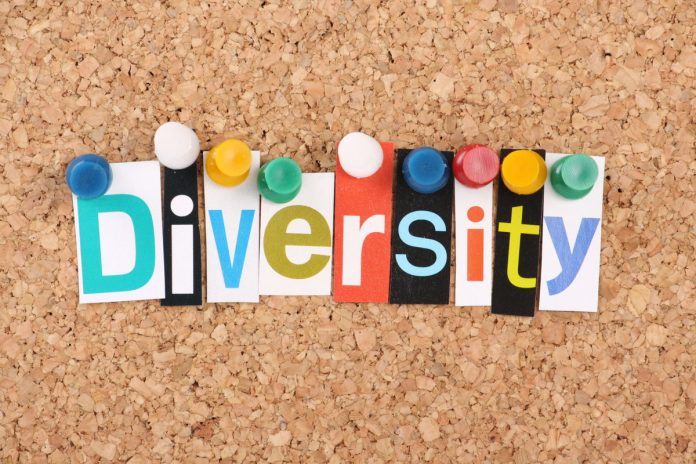Elizabeth Kavanagh, of Stride Treglown explores the value of diversity for BIM and the role of collaboration as we move towards Digital Built Britain
The construction sector is looking to collaborate as part of our drive towards achieving greater innovation and realising the full benefits of BIM. A key point to remember is that collaboration requires and encourages different viewpoints and assists teams in moving from an adversarial approach towards capitalising on creative conflict. The differing perspectives within a collaborative team ensure that new possibilities are embraced rather than overlooked, as can be the case with teams with the same group of experiences.
It has been found that high cohesiveness, through homogeneity, can lead to “groupthink”. This is when team members shut themselves off from outsiders with conflicting views and develop an unrealistic sense of righteousness and blinkered views and solutions (Janis, 1972).
Groupthink is a danger within the construction sector which has not historically welcomed those from outside the sector, although the first signs of this are changing with consultancies introducing “non-cognates” (e.g. engineering firms hiring non-engineers) as their graduates, starting graduate exchange schemes and looking for secondments all aimed at sharing perspectives.
All forms of diversity are important in establishing a collaborative culture as this calls for thought diversity which comes through having different life experiences.
For example, our personality impacts on our preferred communication style and the tasks we are particularly good at. Teams with a variety of personality types generally collaborate more effectively than those with team members of the same or similar personality types. It, therefore, follows that environments that support true collaboration need to recognise that there are different preferred means of communication and interaction, which will ultimately contribute to successful collaboration.
Should we, therefore, select people for the team based on their personality?
You might want to consider selecting people for collaborative forms of contract based on their collaborative behaviours. For example, short term thinkers aligned within the team with long game thinkers balance each other’s perspectives. This is something we see happening within the infrastructure sectors where collaborative behaviours can form between 15-75% of the scoring criteria (where cost may be as little as 15%).
Don’t we just need to have the most knowledgeable people on the team?
That may not be enough since what is required in collaborative teams is not just knowledge; it is their behaviours and soft skills as well as the traditionally highly valued task related competencies.
Lynda Gratton and Tamara J. Erickson wrote an article entitled “Eight Ways to Build Collaborative Teams” for the Harvard Business Review where they stated that:
“We have found that the greater the proportion of experts a team had, the more likely it was to disintegrate into non-productive conflict or stalemate”.
When establishing alliances, it was found to be more effective to recruit people on a “Best for task” basis rather than selecting them based on their knowledge, since specialist knowledge can be accessed during the course of a collaboration as needed.
Are women better at collaborating?
It is true to say that heterogeneous groups perform better. Therefore, this move towards collaboration represents an opportunity for women and others currently underrepresented in the sector.
That might mean in the case of the construction sector we need to be active in promoting diversity to fully achieve collaboration by, for example, being conscious of diversity within our collaborative teams.
This is because “heterogeneous groups convey a more varied style of problem-solving and interact more; furthermore, they discuss alternative solutions, devise more creative ideas, and are found overall to be more effective” (as outlined by Rebecca Rutherfoord of the Southern Polytechnic State University in her case study of 2006: Using personality inventories to form teams for class projects).
We do, however, need to acknowledge that heterogeneous groups also require strong team leading to be able to harness different perspectives while managing conflict. Heterogeneous groups challenge each other and are more likely to develop a more unique, effective and creative solution.
It is, therefore, unwise to establish a collaboration with an all male or all female group since different since different backgrounds give different perspectives, which are valuable to collaboration.
The call, therefore, is in creating a more diverse workforce in the construction sector to create and sustain collaboration, not just because it would be a nicer place to work – although it probably would.
Let’s start this journey with a resolution to challenge ourselves and our own unconscious bias. ■
For further reading about unconscious bias and how to collaborate better, I would also recommend you visit: https://www.theguardian.com/women-in-leadership/2015/dec/14/recognise-overcome-unconscious-bias
Or watch the video below.
. . . . . . . . . . . . . . . . . . . . . . . . . . . . . . . . . . . . . . . . . . . . . . .
Elizabeth Kavanagh
Head of HR, Research and Innovation
Stride Treglown Ltd.
ElizabethKavanagh@stridetreglown.com
Twitter @Beh4Coll
Twitter @ElizabethKavan6














